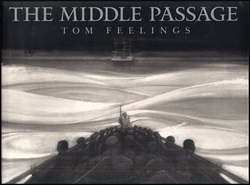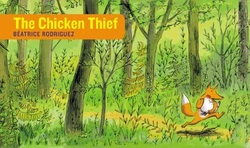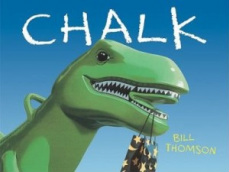
The Middle Passage: White Ships | Black Cargoby Tom Feelings
Dial Books, 1995
Twenty years in the making, The Middle Passage wordlessly depicts the horrifying journey across the Atlantic that millions of African captives were forced to take during the slave trade.
I was first introduced to The Middle Passage during a young adult literature class I took during the course of my MLIS, and it hasn't left my mind since. Not an easy book to procure, I luckily found a copy on a used book website and purchased it for the high school library I manage, and I view it as a highly prized part of the collection.
The Middle Passage is not an easy book to experience. I say 'experience' because while wordless, it is immensely powerful and often difficult to view. In fact, the horror that Feelings portrays throughout dozens of black and white paintings cannot possibly be put into words. Scenes of violence, abuse, rape, murder, and death abound, yet while Feelings' artistry reveals enough to make clear what is happening in the paintings, the images are not graphic in the sense that some violence in films and books are graphic. What is shown is enough to clearly indicate what is happening and the blanks are easily, uncomfortably, filled in.
There is a lot to absorb in The Middle Passage. The white men who abduct the African captives are so pale as to be ghostly. Scenes of the ship's hold, with hundreds of shackled men, women, and children crammed into tiny spaces where many fall ill and perish, are unimaginable. The spirit of the slaves emerges strongly, with rage and mutinous intentions made clear.
It is difficult to adequately describe The Middle Passage. It is a book that proves that not only is a picture worth a thousand words, but worth more than words can say.
Dial Books, 1995
Twenty years in the making, The Middle Passage wordlessly depicts the horrifying journey across the Atlantic that millions of African captives were forced to take during the slave trade.
I was first introduced to The Middle Passage during a young adult literature class I took during the course of my MLIS, and it hasn't left my mind since. Not an easy book to procure, I luckily found a copy on a used book website and purchased it for the high school library I manage, and I view it as a highly prized part of the collection.
The Middle Passage is not an easy book to experience. I say 'experience' because while wordless, it is immensely powerful and often difficult to view. In fact, the horror that Feelings portrays throughout dozens of black and white paintings cannot possibly be put into words. Scenes of violence, abuse, rape, murder, and death abound, yet while Feelings' artistry reveals enough to make clear what is happening in the paintings, the images are not graphic in the sense that some violence in films and books are graphic. What is shown is enough to clearly indicate what is happening and the blanks are easily, uncomfortably, filled in.
There is a lot to absorb in The Middle Passage. The white men who abduct the African captives are so pale as to be ghostly. Scenes of the ship's hold, with hundreds of shackled men, women, and children crammed into tiny spaces where many fall ill and perish, are unimaginable. The spirit of the slaves emerges strongly, with rage and mutinous intentions made clear.
It is difficult to adequately describe The Middle Passage. It is a book that proves that not only is a picture worth a thousand words, but worth more than words can say.


 RSS Feed
RSS Feed